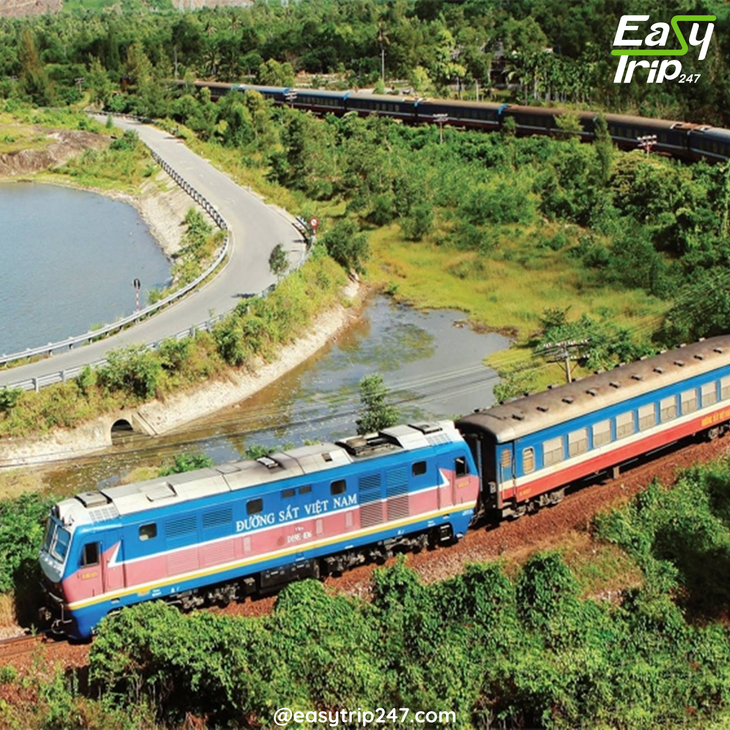What Are the Transportation Options Within Vietnam?
On
23/06/2025Reading time:
1 min
Summary:
Vietnam is a land of stunning contrasts—from the emerald rice terraces of the north to the sprawling river deltas of the south. Whether you're venturing into ancient towns, coastal cities, or remote countryside villages, your journey across this dynamic country hinges on the transportation options you choose.

Domestic Flights – Covering Distance with Ease
For travelers looking to save time while covering long distances, domestic flights in Vietnam are both reliable and affordable. The country’s major carriers—Vietnam Airlines, VietJet Air, and Bamboo Airways—connect over 20 destinations, including Hanoi, Ho Chi Minh City, Da Nang, Nha Trang, and Phu Quoc. Flights typically take 1–2 hours, making it possible to traverse the entire country in a day.
The best time to visit Vietnam for flying is during the dry seasons—spring (March to May) and autumn (September to November)—when visibility is high and delays due to monsoon weather are minimal. If you’re planning to explore both the north and south, flying can be a smart move to make the most of your trip without spending hours on the road or rails.
Trains – A Journey Through Vietnam’s Soul
Vietnam’s railway system offers one of the most scenic and nostalgic ways to see the country. Running from Hanoi to Ho Chi Minh City, the Reunification Express is more than just a train ride—it’s a cultural immersion. Along the way, it passes through historic cities like Hue, Da Nang, and Nha Trang, offering passengers glimpses of Vietnam’s diverse geography.
Taking the train during the best time to visit Vietnam enhances the experience tenfold. From March to May, the countryside bursts into color with blooming flowers and emerald fields, while from September to November, cooler temperatures make long journeys more pleasant. Opt for soft sleeper cabins for comfort or hard seats if you’re up for a local-style ride.
Buses – The Backbone of Vietnamese Transport
Vietnam’s bus system is extensive and budget-friendly, perfect for backpackers and slow travelers. Long-distance sleeper buses connect cities like Hanoi, Hue, and Ho Chi Minh City, while minivans and local buses reach even the most remote towns and villages. During the best time to visit Vietnam, roads are typically in good condition, and the lack of heavy rain makes bus travel smoother and more enjoyable.
Private companies like Futa Bus Lines, The Sinh Tourist, and Sapa Express offer reliable service with online booking and onboard amenities. If you're traveling during peak tourist seasons, be sure to book in advance—especially around national holidays and festivals.
Motorbikes – The Ultimate Vietnamese Adventure
No other form of transport offers the freedom and excitement that comes with riding a motorbike across Vietnam. Whether you rent a scooter for a few days in Da Nang or commit to a cross-country journey from Hanoi to Ho Chi Minh City, motorbiking gives you direct access to Vietnam’s raw beauty.
The best time to visit Vietnam for motorbike travel is during dry months when mountain passes are safer and scenic routes like the Hai Van Pass or the Ho Chi Minh Road shine with natural brilliance. Central Vietnam is particularly motorbike-friendly from February to May, with clear skies and cool breezes.
Just remember: Always wear a helmet, carry your international driving permit, and invest in a good-quality bike if you're planning a long trip.
Taxis and Ride-Hailing Apps – Urban Convenience
In Vietnam’s bustling urban centers, taxis are plentiful and reasonably priced. However, the real game-changer has been the rise of ride-hailing apps like Grab and Be. These apps offer everything from motorbike taxis to private cars and have transformed city travel with transparent pricing and efficient service.
Traveling during the best time to visit Vietnam, especially in cities like Hanoi and Ho Chi Minh City, can mean navigating through crowds. Ride-hailing apps can help you save time, avoid scams, and travel comfortably from one attraction to the next—whether it's a street food market or a cultural museum.
Bicycles and Electric Scooters – Eco-Friendly Exploration
In smaller cities and towns such as Hoi An, Hue, and Ninh Binh, bicycles and electric scooters are a delightful way to explore at your own pace. These eco-friendly options are especially rewarding during the best time to visit Vietnam, when the weather is pleasant, skies are clear, and landscapes are at their most photogenic.
Rental shops are abundant, and many guesthouses offer free or low-cost bikes to their guests. From rice paddies and ancient temples to quiet village roads, cycling allows for slow, immersive travel that lets you soak in Vietnam’s charm.
Boats and Ferries – Waterway Wonders
Vietnam’s coastline and river networks open the door to a unique transportation experience: boat travel. In the south, the Mekong Delta is famous for its floating markets and slow-paced canal tours. In the north, Ha Long Bay and Lan Ha Bay offer overnight cruises that are often the highlight of any itinerary.
The best time to visit Vietnam for boat travel is the dry season—typically October through April—when the seas are calm and the skies are blue. Ferries also connect mainland cities to islands like Cat Ba, Con Dao, and Phu Quoc, offering travelers new ways to explore Vietnam’s coastal wonders.
Cyclos – A Throwback to Simpler Times
For a nostalgic touch, hop on a cyclo—a three-wheeled bicycle taxi still found in cities like Hanoi, Hue, and Hoi An. These charming rides are perfect for short distances, leisurely sightseeing, and soaking in local street scenes. You’ll find cyclo drivers waiting near tourist sites, ready to guide you through historic quarters or riverside promenades.
Riding a cyclo during the best time to visit Vietnam, particularly in the cooler months, turns a simple journey into a memorable moment—especially when the streets are alive with flowers, lanterns, or festival lights.
Metro Systems – The Future of Urban Mobility
Vietnam is rapidly developing its metro systems, with Hanoi and Ho Chi Minh City leading the way. While still under expansion, Hanoi’s Cat Linh-Ha Dong line has opened a new chapter in urban mobility. Once fully operational, these systems will revolutionize how locals and tourists travel through Vietnam’s largest cities.
If you’re planning your trip around the best time to visit Vietnam, consider that the metro offers a great way to beat traffic and explore the city in a more efficient, sustainable manner—especially when urban areas get busy during festivals and national holidays.
Final Thoughts: Travel Smart, Travel Beautifully
The variety of transportation options in Vietnam means there’s always a way to explore—no matter your style, budget, or itinerary. Choosing the right transport can transform your trip from ordinary to extraordinary, especially if you're traveling during the best time to visit Vietnam. The dry seasons—from March to May and September to November—offer ideal conditions for everything from scenic train rides and boat cruises to motorbike tours and countryside cycling.
Whether you want the speed of a domestic flight, the local charm of a train, or the thrill of a two-wheeled road trip, Vietnam is built for the curious traveler. Combine your transport choice with the best time to visit Vietnam, and your adventure will not only be efficient—it’ll be unforgettable.
So, as you dream of sipping coffee in a Hanoi café, island hopping in Phu Quoc, or winding through Hai Van Pass, remember this: the journey across Vietnam is just as colorful and exciting as the destinations themselves. With the right transport and the best time to visit Vietnam, your travel story will be one worth telling for years to come.
Design Your Tour Today And Get A Quote. Contact Us Here: +84.975.504.825
Source: Easytrip247 Team compiled.
